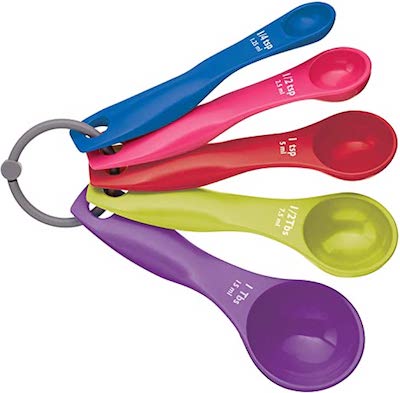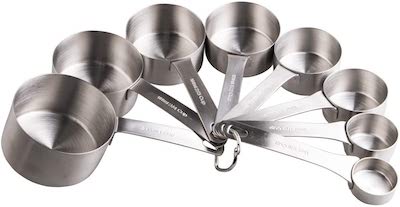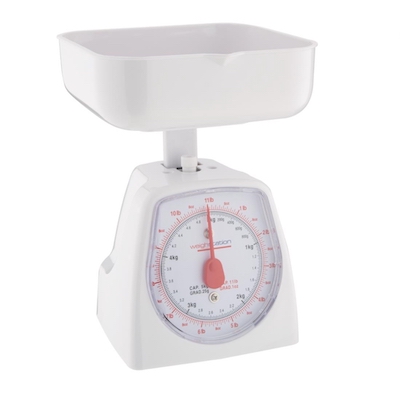Even if you don’t usually bake a lot, you know that you have different measuring tools that allow you to measure ingredients the right way. So, we will go through the most used measurement tools that you should have in your kitchen and tell you a bit about their pros and cons.

#1: Measuring Spoons:
Measuring spoons are usually used to measure small amounts of ingredients. They are, most of the times, made of plastic or metal, and they come in sets with different sizes.
A good set of measuring spoons should include 1 tablespoon, 1 teaspoon, 1/2 teaspoon, 1/4 teaspoon, and 1/8 teaspoon.

One of the things to keep in mind is that you should always try to fill the measuring spoon completely and then use the back edge of a knife to level off the top.
While measuring spoons can be used to measure both liquid and dry ingredients, they are not very accurate.
Discover everything you need to know about measuring with tablespoons.
#2: Measuring Cups:

When talking about measuring cups, it is crucial to understand the difference between a dry measuring cup and a liquid measuring cup. The first ones are level on top and they are usually made of plastic or metal. In some cases, they come with a handle to help use them as a scoop. These are best suited for dry ingredients like flour, sugar, shortening, among others. On the other hand, liquid measuring cups have marks on the side and are usually made of clear plastic or glass. They always have a handle and spout to make pouring easy. In most cases, they are sold individually and come in various sizes. You can use these for oil, water, milk, among other liquid ingredients.
Looking to know how many tablespoons in half a cup?
Ultimately, and while they measuring spoons and measuring cups are different, they share the same pros and cons.
In what concerns the pros we can state that they are inexpensive, easily accessed, and most people already have them in the kitchen. Besides, a lot of recipes use cups and spoons. So, you won’t need to make any conversions.
In what concerns the cons, one of the biggest downsides is the fact that it is very difficult to be accurate with them. Even when you use them properly, it is normal that your measurement varies between 10 and 25% for each side. That could be way too much or way too little of an ingredient and change the whole recipe.
Easily convert ounces to tablespoons with our simple converter.
#3: Kitchen Scale:

While in the United States most people are used to bake using measuring spoons and measuring cups as well as most recipes tend to use these measuring instruments, the truth is that a kitchen scale is a lot more precise. With a kitchen scale, you can always know exactly how much of each ingredient you have added and it won’t matter if you leveled the cup right or sifted the flour before or after measuring. The weight is universal.
Looking to convert a half cup into tablespoons?
Besides, when you want to double or cut a recipe in half, a scale makes the process incredibly easy. Besides, one of the best things about scales is that you can change the units. This means that you can weigh your ingredients either in grams or ounces as you prefer.
